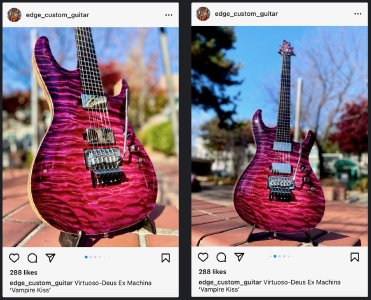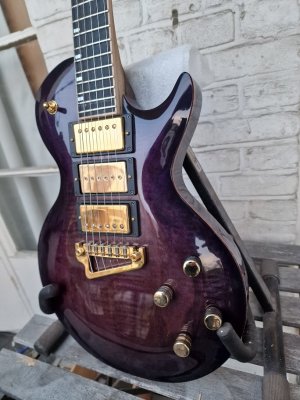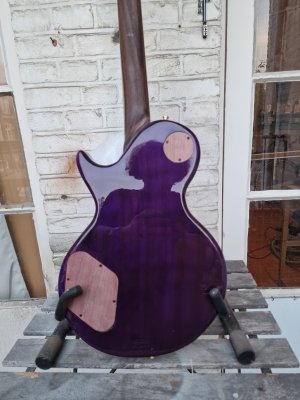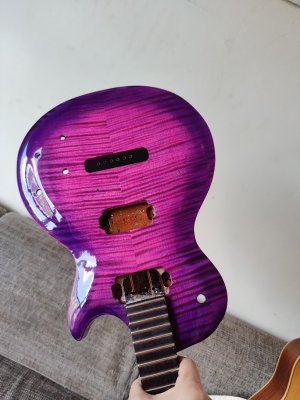That guitar's finish is almost more of a PRS Dragon Breath staining pattern than a Glow pattern (PRS term for effectively doing a dye-based burst effect ).
I did a few when I got bored during the 'COVID years':
You would use an airbrush if you were using translucent paint, which is an option for replicating this look.
For wood dyes though you apply them with a folder paper towel/cloth; it needs to be wiped off or it'll leave an unsightly mess as it drys.
Pat Wilkins Guitars, for example, could surely do that with a mix of box techniques.
You can indeed make several mixes of the colors from dark magenta -> magenta -> red ->pink, and then stain in the desired pattern and blend colors in.
The more you mix and overlap colors on the body, the more colors loose vividness and turn 'muddy' as they mix together.
That's what happened with that green one above; it still had a nice color but it was completely different than what I intended.
Best to practice, a lot, on spare wood first.
This will however most likely not give you the high contrast/color separation you see on that guitar around the horns.
For this you would have to stain, sandback very lightly, stain again. In the last step you would not use the darkest stain you used at the first stage (dark magenta) but instead apply the lighter magenta onto the dark magenta you just sanded back.
It's not terribly more difficult to do, but again: practice a lot if you go this route.
Leather dyes like Fiebing's Red and Light Blue/Dark Blue would have incredible vividness for this color scheme but they fade so quickly I would not recommend them if you intend to leave the guitar exposed to light (natural or artificial) all day long.
TransTint is very lightfast but when it comes to vidid pink or vivid light blue it's been fairly useless.
I tried Keda liquid dyes and doing a pink by diluting their red is do-able but it will be a fairly warm pink that doesn't have the colder/magenta hue you see on that guitar. I haven't tried their powder based ones, the tutorial he makes with those seem quite compelling though.







